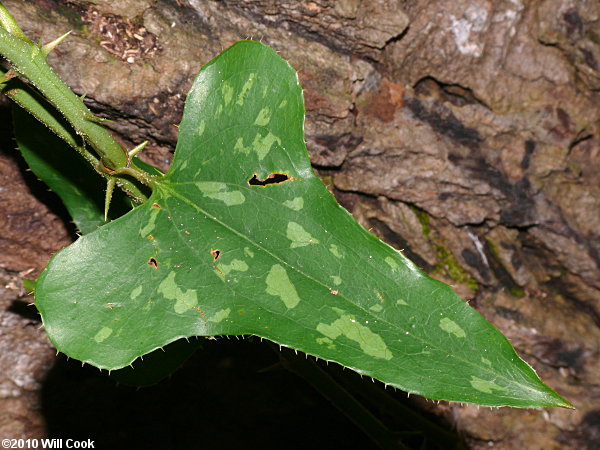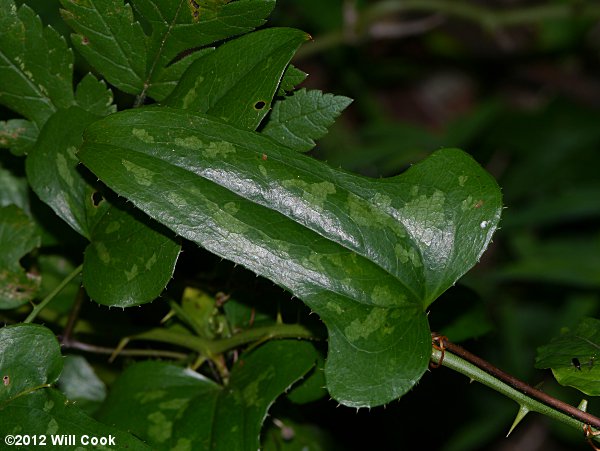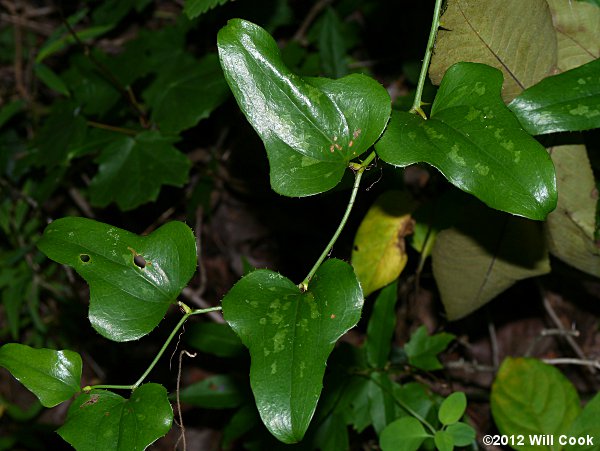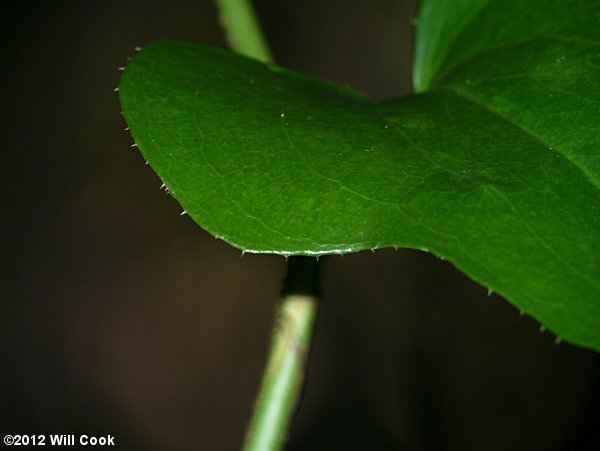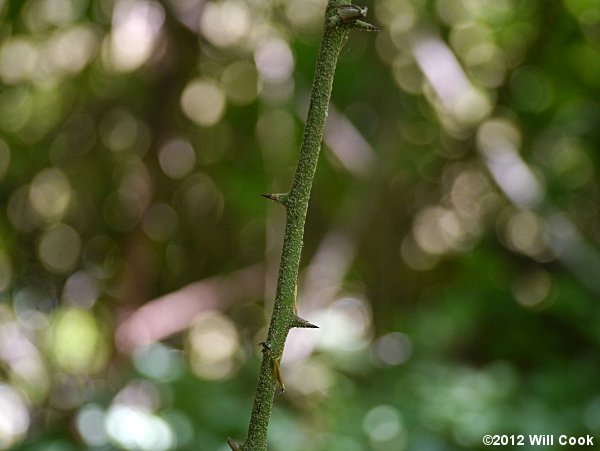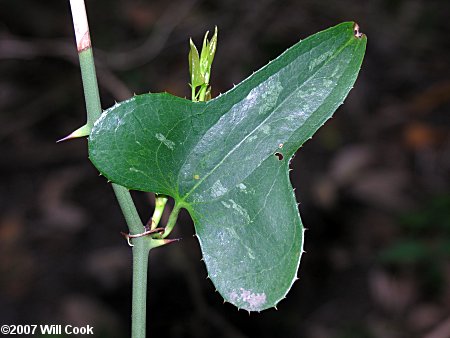
| A vigorous evergreen vine, forming dense low, nearly impenetrable thickets. It is abundant in the Coastal Plain, common in the Piedmont, and occurs in a few counties in the Mountains of North Carolina. Smilax bona-nox is commonly called Catbrier, since the stout prickles will scratch you like a cat if you try to walk through it. The thick leaves often have a pair of lobes at the base (sometimes hastate, or halberd-shaped) and often have prickly margins. The leaves are often mottled with pale green above. Carteret Co., NC 4/14/07.
|
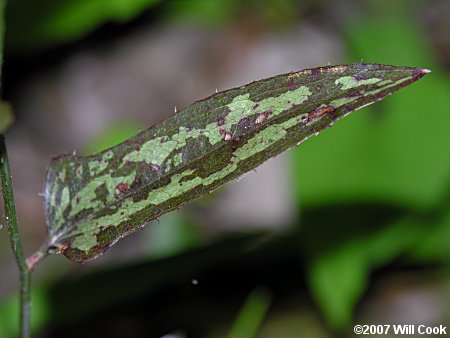
| The fruits (not pictured) look like clusters of small grapes. Smilax bona-nox is very similar to Smilax auriculata, but auriculata normally grows in dry sandy areas at the immediate coast, while bona-nox has a wide range of habitats. In bona-nox, the umbel's stalk is about the same length as the leaf petiole, the lower stems and prickles are hairy, and the berries usually have one seed. In auriculata, the umbel's stalk is half again as long as the petiole, the stems and prickles are glabrous, and the berries have 2-3 seeds. The name bona-nox means "good night" in Latin. Why did Linnaeus gave it this unusual name? Perhaps bona-nox was a curse in Latin -- the species certainly causes lots of cursing by field biologists when they get stuck by its prickles! Jones Co., NC 4/14/07.
|


